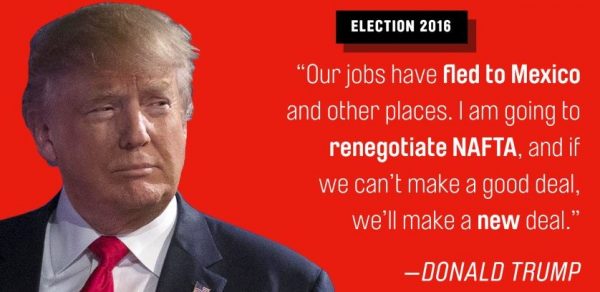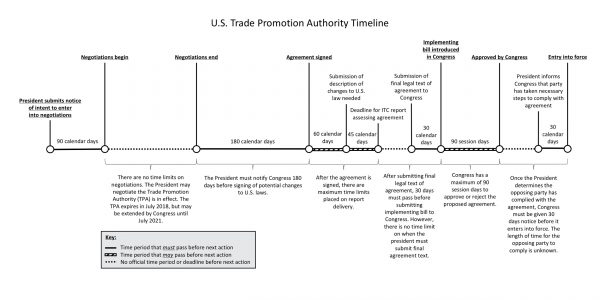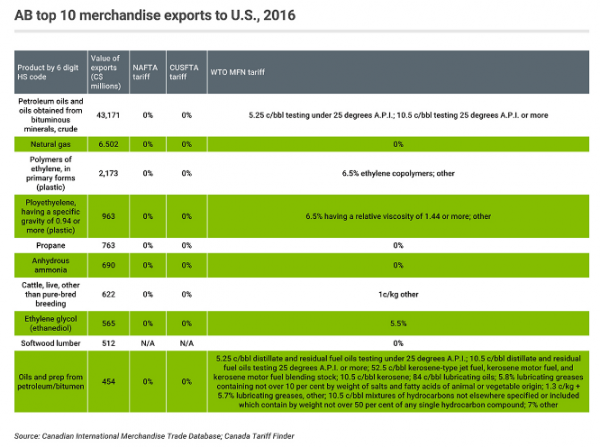 Ending NAFTA would hurt Alberta more than any other province, but it could hurt USA more
Ending NAFTA would hurt Alberta more than any other province, but it could hurt USA more
When the Canada-US free trade agreement was negotiated almost 30 years ago, many Canadians worried that deepening our country’s economic relationship with the world’s largest economy might make us too vulnerable to the vagaries of American politics. With the election of Donald Trump last year, and his promises to rip up NAFTA – or at the very least negotiate a much better deal for the US – those concerns are front and centre as the two countries and Mexico finished the fourth round of negotiations late last week in Virginia.
I sat down with Carlo Dade, director of the Trade & Investment Centre for the CanadaWest Foundation, to discuss the key issues for Canada, Alberta, and British Columbia.
Bottom line? Yes, abrogating or gutting NAFTA will hurt. But it may not hurt as much as it could because NAFTA incorporates other trade treaties that would come back into effect. Those agreements may not be as beneficial to Canada as NAFTA, but the consequence of no NAFTA is not chaos.
Despite the hand-wringing over the volatility of President Trump, according to Article 1, section 8 of the U.S. Constitution, Congress, not Trump sets trade negotiating priorities. and Congress, not Trump, will determine the fate of NAFTA.
The Trade Promotion Authority (TPA) process is the most critical element of the negotiation. This is how the House Ways and Means and Senate Finance committees set negotiating priorities and give negotiating instructions to the administration.
This is not a “one and done” process – these committees will constantly be looking over the administration’s shoulder and reviewing progress during the negotiations.
The TPA mandates specific timelines for action. These timelines interact with elections in the U.S. and Mexico, introducing domestic political influences that will significantly affect negotiations in Mexico and the U.S. but not in Canada.
Dairy will be a key issue for Canada in NAFTA talks. New polling shows that Canadians are willing to put dairy and supply management on the table in exchange for concessions in other areas.
 By Carlo Dade, CanadaWest Foundation
By Carlo Dade, CanadaWest Foundation
With 76 per cent of Canadian goods exports (2016) and more than half our service exports (55 per cent in 2016) sent to the U.S., any disruption in our relationship with our largest trade partner would have serious consequences. While Trump’s bluster appears to be a negotiating ploy, it’s worth considering potential ramifications.
Scrapping NAFTA is not as easy as it sounds. Many scenarios could unfold. The four below cover the range of possible outcomes. The bottom line is that under any scenario, a Trump withdrawal from NAFTA is likely to turn into a legal and political mess.
Four scenarios for the U.S. terminating NAFTA
1) The President tries to end the deal but Congress doesn’t agree
NAFTA text is clear that any signatory may leave the pact after giving the other members six months notice of intent to withdraw from the agreement. But there are various opinions in the U.S. as to what would happen if a president unilaterally terminates a trade deal. The U.S. Congress passed legislation authorizing then-President Clinton to enter into NAFTA and integrate the measures into U.S. law. Congress also gave the president authority to withdraw from trade agreements – although it’s unclear that this is Constitutional. Under the U.S. Constitution’s commerce clause, Congress has the sole power to regulate foreign trade. If President Trump terminates NAFTA on his own, there would likely be a legal challenge that would quickly wind up in the Supreme Court. And many congressional Republicans, like Senate Leader Mitch McConnell, support NAFTA. Congress could also attempt to block funding for activities needed to carry out the withdrawal.
 2) President and Congress agree to pull out of NAFTA, CUSFTA kicks in
2) President and Congress agree to pull out of NAFTA, CUSFTA kicks in
If the president could get congressional approval to leave NAFTA, the deal’s predecessor, the Canada-U.S. Free Trade Agreement (CUSFTA), would kick into place. NAFTA essentially rolled over the tariff eliminations made in the CUSFTA with added provisions for trade with Mexico, so there would be little tariff-related change in the Canada-U.S. trade relationship under CUSFTA vs. NAFTA. In this scenario, NAFTA would continue to exist between Canada and Mexico.
3) The U.S. withdraws from both NAFTA and CUSFTA, WTO trade rules govern trade
If the U.S. withdrew from NAFTA, it probably wouldn’t want essentially the same measures to continue governing its trade with Canada, under the CUSFTA. (Although it might, since a lot of its NAFTA concerns, like job losses, are directed at Mexico.) If the U.S. also broke the CUSFTA, then Word Trade Organization (WTO) most favoured nation (MFN) tariff rules would govern Canada-U.S. trade. The U.S. MFN average tariff in 2016 was 3.5 per cent (some goods have a WTO MFN of zero percent). NAFTA would continue to exist between Canada and Mexico.
 4) The U.S. withdraws from both NAFTA and CUSFTA, imposes tariffs higher than WTO levels
4) The U.S. withdraws from both NAFTA and CUSFTA, imposes tariffs higher than WTO levels
It is possible the U.S. would impose tariffs higher than the WTO most-favoured-nation levels if it withdrew from NAFTA/CUSFTA. While WTO member countries agreed to reduce tariffs through the Uruguay Round Agreements of the late 1980s/early 1990s, the tariff reductions are not legally binding.
Despite the Constitution’s commerce clause, other U.S. laws give the president authority to impose tariffs during national emergencies and times of war. President Trump has mused about imposing 35 per cent tariffs on imports from companies that move operations out of the U.S., placing a 20 per cent tariff on imports from Mexico to fund construction of a border wall, and proposed a 45 per cent tariff on imports from China. It is unlikely the U.S. would impose tariffs this high on Canada, but it is possible we could face something higher than the 3.5 per cent average WTO MFN, or the 4 per cent average tariffs in place before the CUSFTA was implemented. If the U.S. imposed higher than MFN tariffs, Canada (and Mexico) may decide to retaliate, causing tariff escalation. It is also possible a U.S. withdrawal from NAFTA/CUSFTA would be combined with trade action against other countries, which could have trickle-down impacts on Canadian supply chains.
While it seems both legally and logistically difficult for the U.S. to withdraw from NAFTA, nothing should be taken for granted. It is worth considering the impact on western Canada’s merchandise trade with the U.S. under the scenarios above.
What trade data tells us about how the West would fare
The western provinces have varying levels of reliance on trade with the U.S. In 2016, 86 per cent of Alberta’s total exports were sent to the U.S. About half of B.C. and Saskatchewan’s exports go to the U.S., 53 per cent and 48 per cent respectively last year. Manitoba shipped 67 per cent of total goods exports to the U.S. in 2016.
The following charts show the top 10 merchandise exports to the U.S. for each western province by six-digit HS code, the most granular trade data publicly available. The corresponding tariff under the NAFTA, the CUSFTA and the WTO’s MFN give an idea of tariff barriers western goods exports would face if the U.S. broke both its trade deals with Canada.
This blog post originally appeared on the CanadaWest Foundation site as Analysis: How Trump’s threat to scrap NAFTA could unfold (and what it means for western Canada) on Oct. 11, 2017.



Be the first to comment